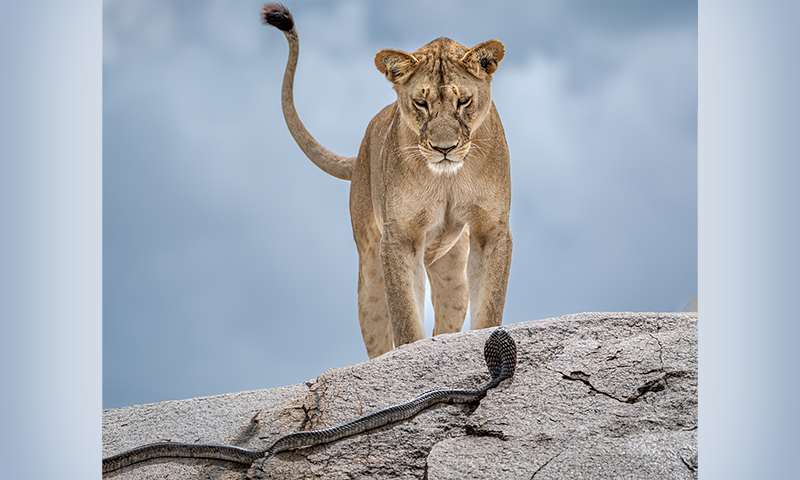Now Reading: Lion vs. Cobra: A Fierce Showdown
-
01
Lion vs. Cobra: A Fierce Showdown
Lion vs. Cobra: A Fierce Showdown

Swift Summary
- Italian photographer Gabriella Comi captured a striking image of an elder lion confronting a cobra in Tanzania’s Serengeti National Park.
- The snake, possibly a black-necked spitting cobra or Egyptian cobra, possesses venom that is fatal to large mammals and humans.
- The encounter was unique, as cobras rarely attack lions; either predator could prove lethal to the other in such standoffs.
- Lions typically sleep 15-20 hours daily and are most active during evenings and nighttime. They rest under shaded areas that cold-blooded animals like snakes may also frequent.
- Lions can adapt their behavior in response to threats or human interaction by adjusting their resting patterns or locations, especially in high-tourism areas like the Serengeti.
- Comi’s work has been acknowledged by the Wildlife Photographer of the Year 2025 competition for its compelling outlook of this encounter.
Indian Opinion Analysis
The confrontation between apex predators,though rare,underscores crucial ecological dynamics at play within protected spaces like Tanzania’s Serengeti National Park. For India-a nation home to its own iconic predators such as Asiatic lions and Bengal tigers-there are deep parallels regarding predator behavior adaptation amid rising human activity within reserves and national parks. Ecosystems thrive when coexistence with humans is mutual yet minimally intrusive; lessons from regions balancing tourism with wildlife preservation resonate strongly for India’s growing conservation strategy challenges across habitats like Gir Forest or Sundarbans.

























